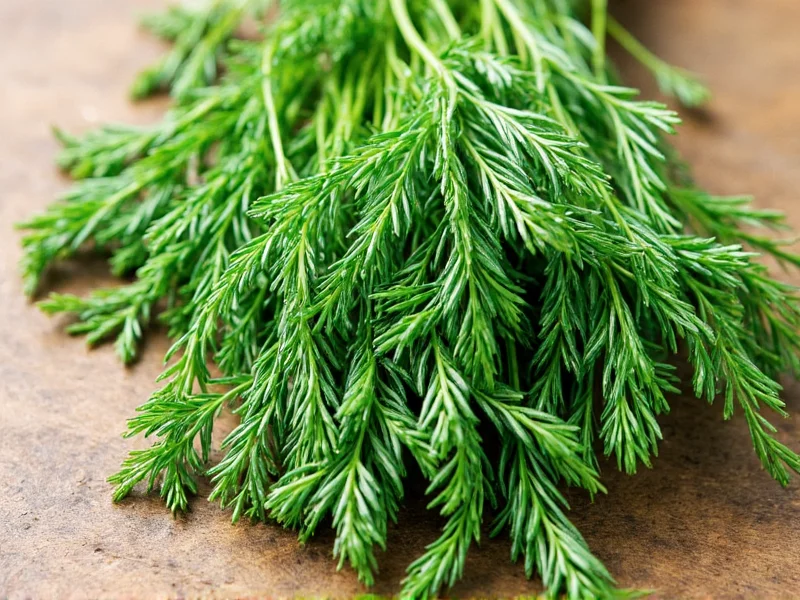Fresh dill stands as one of the most versatile culinary herbs, prized for its unique flavor profile that transforms simple dishes into memorable culinary experiences. Unlike its dried counterpart, fresh dill delivers a vibrant, complex taste that significantly enhances various recipes. Understanding this herb's characteristics helps home cooks and professional chefs alike maximize its potential in the kitchen.
Understanding Fresh Dill: More Than Just an Herb
Fresh dill represents the unprocessed form of the dill plant, harvested at peak freshness when its delicate fronds display maximum flavor compounds. The herb features fine, lacy leaves that grow in feathery clusters atop slender green stems. When properly grown and harvested, fresh dill exudes a distinctive aroma combining grassy notes with subtle hints of citrus and anise.
Botanically classified as Anethum graveolens, dill belongs to the Apiaceae family, which includes parsley, cilantro, and fennel. This annual herb completes its entire life cycle within one growing season, making timely harvesting crucial for capturing its optimal flavor profile. The fresh variety contains higher concentrations of volatile oils than dried dill, explaining its superior aromatic qualities.
Fresh Dill vs. Dried Dill: Key Differences
The distinction between fresh and dried dill extends beyond mere moisture content. These differences significantly impact culinary applications:
| Characteristic | Fresh Dill | Dried Dill |
|---|---|---|
| Flavor Intensity | Bright, complex, with citrus notes | Muted, earthier, less nuanced |
| Texture | Delicate, feathery fronds | Crumbly, brittle leaves |
| Best Culinary Uses | Finishing dishes, salads, dressings, fish | Long-cooking dishes, spice blends |
| Flavor Conversion | 1 part fresh dill | ⅓ part dried dill |
Professional chefs consistently prefer fresh dill for dishes where the herb's flavor should shine prominently. The delicate nature of fresh dill means it works best when added toward the end of cooking or used raw, preserving its volatile flavor compounds that evaporate with prolonged heat exposure.
Culinary Applications of Fresh Dill
Fresh dill's versatility makes it indispensable in numerous culinary traditions. Its bright flavor complements seafood exceptionally well, particularly salmon and other oily fish. Scandinavian cuisine features fresh dill prominently in gravlax, while Eastern European cooking relies on it for traditional cucumber salads and borscht.
When incorporating fresh dill into recipes, consider these professional techniques:
- Add chopped fresh dill to yogurt-based sauces for a refreshing tzatziki or ranch dressing
- Place whole dill sprigs inside fish cavities before baking to infuse subtle flavor
- Combine with lemon zest and olive oil for an elegant finishing sauce
- Use in potato salads where its bright notes cut through mayonnaise richness
- Add to pickling brines for enhanced flavor complexity in homemade pickles
For optimal flavor release, chop fresh dill just before use with a sharp knife rather than tearing the delicate fronds. The enzyme action from cutting releases maximum aromatic compounds without bruising the tender leaves.
Selecting and Storing Fresh Dill
Choosing high-quality fresh dill ensures the best culinary results. Look for vibrant green fronds without yellowing or browning. The stems should feel crisp and firm, not limp or slimy. Avoid bunches with flowering heads, as this indicates the plant has passed its peak flavor stage.
Proper storage extends fresh dill's shelf life significantly:
- Trim stem ends and place in a glass with one inch of water
- Cover loosely with a plastic bag
- Store in refrigerator for up to 10 days
- Change water every two days to maintain freshness
For longer preservation, freeze fresh dill by chopping and placing in ice cube trays with water or olive oil. Alternatively, dry dill by hanging small bunches upside down in a dark, well-ventilated area, though this produces a different flavor profile than store-bought dried dill.
Nutritional Profile and Health Considerations
Fresh dill contributes more than just flavor to dishes—it offers notable nutritional benefits. A quarter cup of fresh dill contains approximately:
- 1 calorie
- 0.1g protein
- 0.2g carbohydrates
- Significant vitamin A and vitamin C
- Trace minerals including calcium and iron
While not consumed in quantities large enough to serve as a primary nutrient source, fresh dill contains antioxidants and compounds that may support digestive health. Traditional medicine has used dill for centuries to alleviate digestive discomfort, though scientific evidence remains limited. The herb's low calorie count makes it an excellent flavor enhancer for health-conscious cooking.
Seasonality and Availability
Fresh dill enjoys peak season from late spring through early fall when locally grown options abound. During winter months, grocery stores typically source from greenhouse operations or import from warmer climates. Farmers' markets offer the freshest locally grown dill during its natural growing season, often harvested within 24 hours of purchase.
When fresh dill proves unavailable, consider these acceptable substitutes:
- Fennel fronds (similar texture with milder anise notes)
- Tarragon (different flavor profile but complementary in many dishes)
- Parsley with a squeeze of lemon (for color and freshness)
Remember that substitutes never fully replicate fresh dill's unique flavor, making proper storage techniques essential for extending its availability throughout the year.











 浙公网安备
33010002000092号
浙公网安备
33010002000092号 浙B2-20120091-4
浙B2-20120091-4